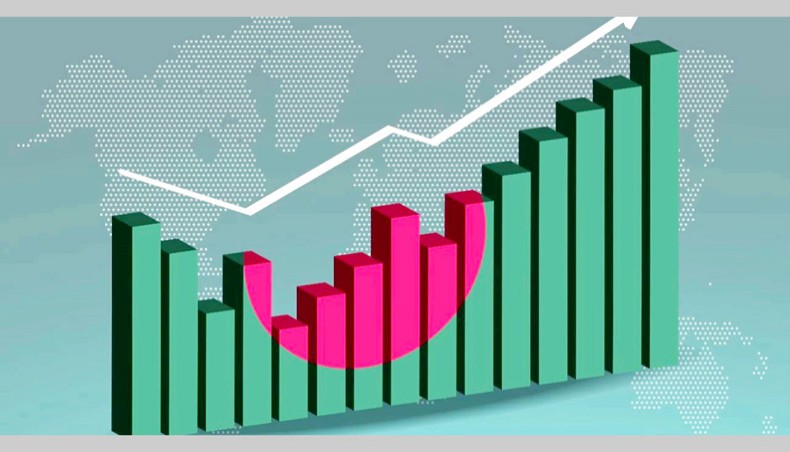



Afsan Chowdhury | | Dec 21, 2023
EVERY year, probably around this this time, the International Monetary Fund releases a set of data on the state of the gross domestic product in the region. This shows that the people in Bangladesh earn more on an average than those in India and Pakistan keeping to GDP calculations. If one looks at data 20 years back, Bangladesh was behind India and Pakistan. Great news! But, what does it mean?
The IMF report says that Bangladesh has been doing very well for the past four years in these indicator areas than India and for eight years than Pakistan. Bangladesh’s per capita GDP is $2,621 while India has $2,612 and Pakistan $1,471. Bangladesh has seen the fastest growth of per capita income among the South Asian countries over the past decade. Does it mean that Bangladeshis are doing the best?
The PPP issue
BASICALLY, GDP calculates the total income generated within the country and divides it by the population. It is a calculation of average. So, it is indicative rather than absolute. The purchasing power parity, however, basically means how much you can purchase with what you earn. And on that count, India is ahead of Bangladesh although Pakistan is behind.
So, if one really wants to measure public prosperity of sorts, India is ahead although by not too much. Pakistan is behind by a wider margin. According to the International Monetary Fund, Bangladesh’s GDP per capita in purchasing power parity is $8,670 in 2023 while India’s $9,180 and Pakistan’s $6,770.
We are still lagging behind India in other economic aspects such as reserve, inflation, export, infrastructure and investment.
Bangladesh leading in social indicators
BANGLADESH is ahead of Pakistan and India in terms of women empowerment. One in every three women in Bangladesh is working while one in every five women is doing a job in India and Pakistan.
‘Of the total working population of the country, 35 per cent are women. More than 25 million women are currently in the work force. Women make up 23 per cent and 20 per cent of the work force in India and Pakistan respectively.
‘The average life expectancy of people in Bangladesh is 72.4 years. Life expectancy is 72 years in India and around 69 years in Pakistan. Literacy rate in both Bangladesh and India are 77 per cent while 59 per cent in Pakistan. Bangladesh is also doing well in maternal mortality, child mortality and birth rate.’ (Prothom Alo English). This is a breakthrough sector though less touted.
What do all data means for regional politics?
WHEN the International Monetary Fund first reported that Bangladesh had topped the South Asian GDP list, it was India which reacted most virulently and it cut across Indian society at large. To India, it was seen as a major defeat at the hands of what was thought to be those who were considered much poorer. Some of the resentment was aimed at the Indian authorities, too, for failing to be ahead of the rest of other South Asians states.
But most of the wrath was aimed at Bangladesh. The main thrust was at migrant workers in India from Bangladesh. ‘If they are so rich, how come they come to do low-paid dirty jobs here’ went the common refrain. Of course, that is true. So is the fact that many Indians come to do jobs in Bangladesh, particularly in the apparel sector. But, that is another matter. Indians felt its top status was being challenged.
Many experts explained that the IMF data did not contradict India’s prosperity and using the PPP index, India is slightly better off than Bangladesh. It was, however, more significantly behind in the social factors, but that did not matter. It was about the collective insecurity of any large developing country in a region of smaller ones.
Politics and GDP in Bangladesh
IN COMPARISON, Bangladesh was relatively quiet about the matter and not even the anti-Indian crowd crowed much. The reasons were obvious. They belonged to the political opposition who ignored the issue. Contesting India was strategically embarrassing for them as it would mean defending the growth. That would mean indirectly praising the achievements of the ruling party. So, it was not politically practical to joust with India and, in the process, say that the economy was not all bad.
Bangladesh does not seem to be interested in such data and even in 2020 when all the spats came out, the public had other matters on their mind. They may not like India, but internal issues bother them more. And, majority of the people really do not care about whose gross domestic product is higher and whose is not, nor very regional knowing they are a mid-level state till date.
However, the data are here and they do tell a story. And, that is positive although not a tale of wild success. Bangladesh is doing well, but economic disparity is rising. Social services show a greater stride and that is worth congratulations. What, however, needs asking is the role of the formal and the informal sector in pushing the growth chart. How much is the product of government action and how much by society on its own.
Afsan Chowdhury is a researcher and journalist.
This article was originally published on New Age.
Views in this article are author’s own and do not necessarily reflect PARI policy.